#then there's that one samurai one where they censored using real katana by having the samurai wield bokken instead
Explore tagged Tumblr posts
Text
I came in looking for panels to redraw
I found Tersilla instead

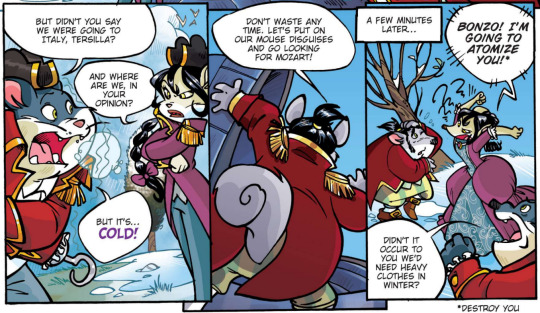

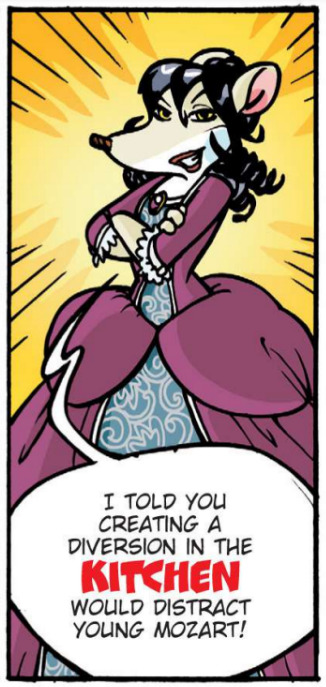
These are from “Play It Again, Mozart” by the way
Also can I jus talk about how lit this artstyle is? The costumes the lineart the coloring the stylization is just MMMMMM
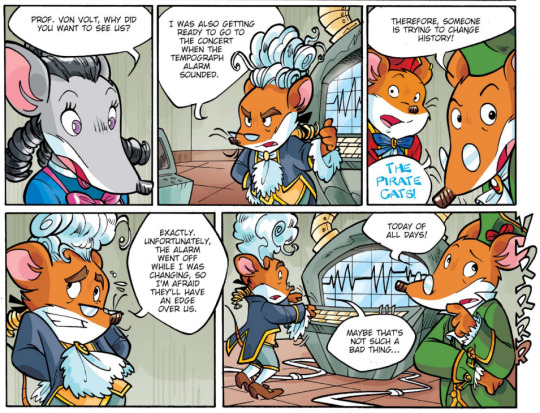

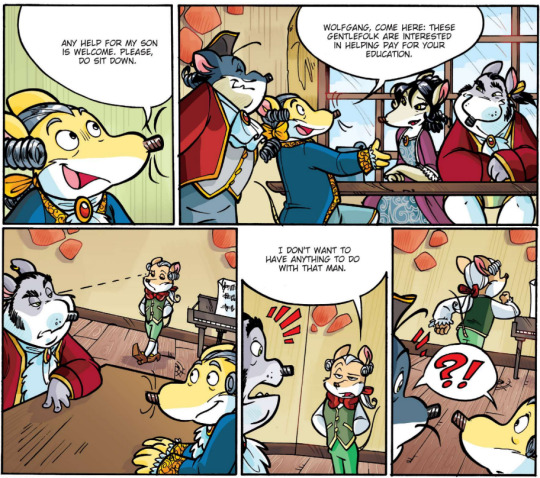
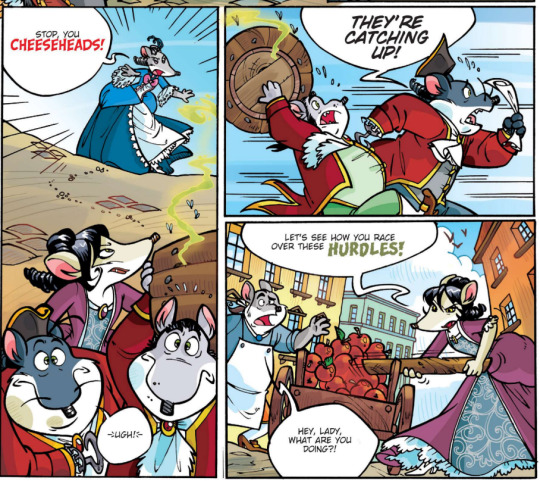
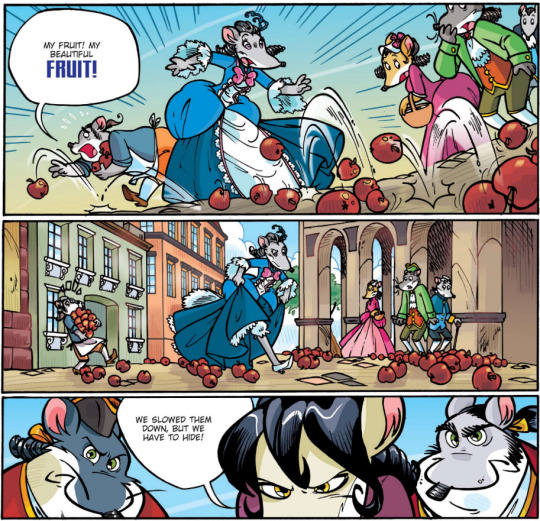
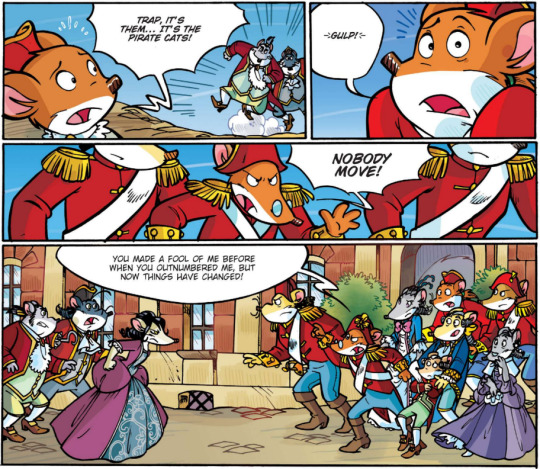
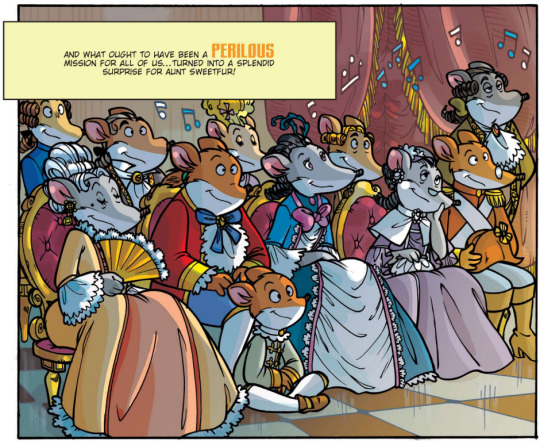
#they should've stuck to this style with the graphic novels smh#I mean the newer ones aren't as atrocious as the Thea Stilton graphic novels#but the transitions from panel to panel are sometimes off and very blatant#then there's that one samurai one where they censored using real katana by having the samurai wield bokken instead#like legit you'd see Catardone take a bokken to Tokugawa's head and somehow threaten the samurai there to drop their bokken like huh#anyway uh Tersilla#tersilla of Catalonia#geronimo stilton#graphic novel#oh yeah and mozart being a little smartass is beautiful#perfectly in character#love how they did mozart justice like that
23 notes
·
View notes
Text
Review: American Samurai (1992)
“Why couldn’t we just have been brothers?”
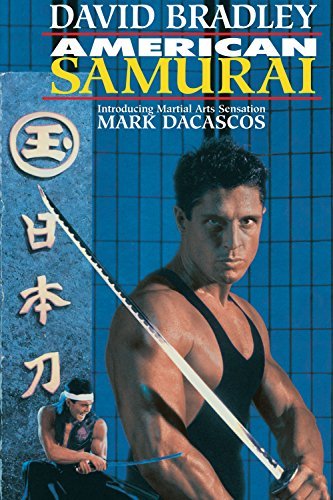
SOURCE
This review is based on the Region 1 DVD release of the film.
SPOILERS AHEAD
The Cannon Group was on its last legs in the early 90s and American Samurai was one of the last movies distributed during its lifetime. The first of several collaborations between director Sam Firstenberg and star David Bradley, this is a picture with a lot going for it that still manages to confound me. When I first saw it, I was shocked by many of the creative and technical decisions, but having recently seen it again, I think I can hang a lot of them on the old sin of studio overreach. Still, it shines in some important and gratifying ways and is worth a watch if this is your kind of thing.
The plot: An American reporter trained in the ways of the samurai (Bradley) and his photographer (Valarie Trapp) investigate a murder in Turkey, where he uncovers a deadly tournament championed by his vicious half-brother (Mark Dacascos).
Writer John Corcoran (RIP) was a well-known figure in the world of martial arts publication, but his sole movie script is basically Bloodsport with weapons. It starts off incredibly pulpy with the baby protagonist surviving a plane crash and being raised by a modern samurai (John Fujioka), but it almost immediately begins hitting recognizable beats of the Jean-Claude Van Damme vehicle, down to a blatant Donald Gibb knockoff character (Rex Ryon). Nevertheless, I think the film originally intended to distinguish itself by being a more dramatic and heartfelt story, with the crux being the conflict between the brothers. We get hints of an emotional undercurrent, with Bradley’s character conflicted about fighting the sibling who feels jealous of his parental favor. However, in the end, we only get a superficial and choppy representation of their feud, including a rushed prologue and a head-spinning psychedelic scene where the lead confronts his brother’s demonic form in a dream. (Shades of Dragon: The Bruce Lee Story?)
That’s a recurring trend: parts of the story and action giving the impression of having once been very different. It’s most apparent in two instances: (1) the breakneck romance between David Bradley and Valarie Trapp, with an abrupt sex scene entirely performed by body doubles, and (2) the final duel between the brothers, which I’m certain was initially a short and minimalistic fight before being expanded with footage obviously transplanted from previous scenes. I get the impression that the script was heavily edited to focus on exploitation, and then the movie saw substantial content changes during post-production. It complicates what probably a pretty simple film, to the point that I don’t feel like I can accurately critique the screenplay and the acting. I don’t assume it was ever a dramatic masterpiece, but I wonder whether even Mark Dacascos’ hamfisted acting didn’t seem more appropriate before his character’s motivations were screwed with after the fact.
Speaking of Dacascos, he’s retrospectively one of the main drawing points of the movie. This was his first substantial film role and he’s still in proto form. His presence and intensity are already apparent, his acting would improve, but the filmmakers don’t quite know how to get the most out of his fight scenes. Dacascos looks great with a katana, but if you’re hoping to find the equivalent of his fight scenes from Drive or even the following year’s Only the Strong, you’ll be disappointed at his comparatively restrained adrenaline pieces.
That said, the action is pretty good. I definitely appreciate it more than I did during my first viewing. Weapons are the name of the game, putting the film in the same subcategory as Ring of Steel and the Swordsman series. There’s some purely hand-to-hand stuff in the first half, with David Bradley demonstrating some cool throws, but for the most part, the action’s a variety of colorful opponents fighting each other with a plethora of bladed weapons. The quality of the fights isn’t static, with more than one marred by an overabundance of cutaway shots, but a lot of thought has been put into the choreography. The flashiest match is a rare onscreen appearance of Hong Kong choreographers Dion Lam and Anthony Szeto, but my personal favorite is a sword-versus-ax encounter between David Bradley and a viking-themed opponent (Mark Warren). I like how Bradley first uses only the hilt of his katana to fight, then only the dull side of the blade before he actually starts slicing. It’s not spectacular stuff, but definitely enjoyable.
“Definitely enjoyable” is a good summation of the movie, but only if you’re already into this genre, are a fan of some of the performers, and/or are prepared to find pleasure in the little details. I like Sam Firstenberg’s signature gore (even though the content is clumsily censored in the DVD release) – not just because of how it helps spice up the duels, but because I appreciate how he was one of the few karate filmmakers who utilized special effects in his action scenes. I get a kick out of Valarie Trapp, who’s nothing special as an actor but whose real-life story of being a struggling writer taking small movie roles to get by is genuinely inspiring. And, of course, I love the fact that two action heroes in different stages of their careers were able to do a film together, because even if this isn’t the best, it’s not so for lack of effort. If this sounds like your kind of picture, it’s worth spending a bit of money on…though you might be better off getting the VHS version in this case, which I don’t recall being quite as heavily censored.
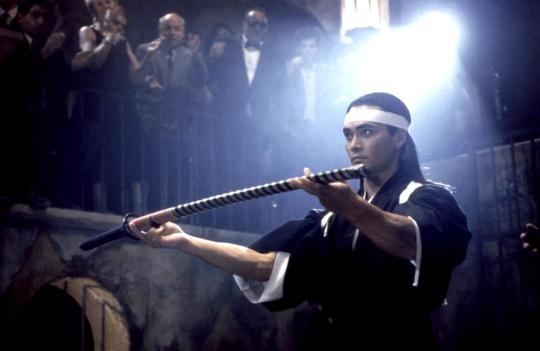
SOURCE
American Samurai (1992) Directed by Sam Firstenberg (Revenge of the Ninja) Written by John Corcoran (editor of Inside Kung Fu magazine) Starring David Bradley (American Ninja 3 & 4), Valarie Trapp (Mr. Stitch), Mark Dacascos, Rex Ryan (The Man in the Iron Mask) Cool costars: The late, great John Fujioka plays another benevolent martial arts master, much like his role in American Ninja. The list of tournament fighters and other onscreen combatants include Hong Kong action masters Dion Lam (Black Mask) and Anthony Szeto (Wushu), karate staple Ron Vreeken (Under the Gun), and award-winning stunt pros Koby Azarly (Sector 4: Extraction) and Rocky McDonald (Mission Impossible II). Second unit director and action coordinator Guy Norris has since moved up the studio ladder, nowadays coordinating for major motion pictures like Mad Max: Fury Road and Suicide Squad. Video game fans may recognize composer Craig Stuart Garfinkle from his later work on the World of Warcraft and Fallout series. Content warning: Extreme violence, violence against women, kidnapping, police intimidation Title refers to David Bradley’s lead character, who plays an American trained in the art of the samurai. In a roundabout way, it could also refer to Mark Dacascos and John Fujioka, who are real-life Americans playing characters with samurai training. (If you want to be a pedantic nitpicker, the title’s a total misnomer since no character’s an actual member of the old Japanese military caste.) Cover accuracy: David Bradley and Mark Dacascos posing with swords, the latter seemingly wearing his outfit from the tournament, are certainly very true to the movie. That said, the Japanese syllabery and paper walls in the background don’t convey that hardly any of the story takes place in Japan. Number of full-length fight scenes: 10 Copyright Cannon Pictures / Global Pictures
#film review#film criticism#film critique#action#martial arts#karate#samurai#kendo#kenjutsu#american samurai#david bradley#mark dacascos#valarie trap#rex ryan#sam firstenberg
14 notes
·
View notes
Text
SPECTACLE OF TRANSNATIONAL CINEMA
Yojimbo
I found Yojimbo to be very interesting, as the main character, Sanjuro was not a traditional samurai who would fight in honour of its master. In the movie, Sanjuro would pledge his loyalty as a bodyguard to the side that pays him the most but in the end he did not take any sides. Sanjuro’s strategy in outsmarting both parties trying to hire him brings more of a modern samurai feel instead of a traditional samurai.
In my opinion, Yojimbo is a transnational movie as it brings a lot of western aspects in the characters and the setting. Yojimbo felt like it is a cowboy movie that is set in Japan. The fight scene in the movie felt like it could be a cowboy movie as during the fights the people of the town would close all the shops and their windows. Sanjuro the samurai had a gunslinger feel to him except his weapon was his katana. Yojimbo also had a more modern movie sound track, which had more of a western feel, and the display of violence in the movies was not very common in Japanese movies during the 60s.
Om Shanti Om
In my opinion, the movie Om Shanti Om did a really great job portraying the real Bollywood industry. In the first half of the movie, Om never made it to a main hero actor due to coming from a common family and having an ‘unattractive’ last name. However in the next life, despite being less hardworking and with a diva attitude Om made it as a big screen actor due to being born into a Kapoor family.
Om Shanti Om is a great example of a transnational movie with its main actor; Shah Rukh Khan being well recognized internationally. The one star six songs and three dances one dancing in Bollywood and in Om Shanti Om has also influenced movies internationally especially with Hollywood musicals to do the same such as in High School Musical. There is also a large use of western terms in Om Shanti Om such as what the fish. However, the movie still sticks to the Indian culture where censored words in movies are frowned upon. During the second half of the movie, a lot of the dressing was also very westernized and the songs featured Caucasians as background dancers.
Crouching Tiger Hidden Dragon
In my opinion, Crouching Tiger Hidden Dragon is my favourite out of all three movies in the transnational theme because it’s not a traditional kung fu movie with male characters doing the fights. Most of the fights scenes in the movie are between Shu Lien and Jen Yu. Even the main villain, Jade Fox was a female character. The ending was really interesting as it gives an open opinion for viewers, did Jen Yu die? Did her wish come true from her sacrifice? I felt that the movie also had a really good pace to it with no scenes that felt too slow and a great combination of action, romance and a sense of ambition.
I believe that Crouching Tiger Hidden Dragon is a great transnational kung fu movie with the line of the main actors all from different countries as Zhang Zi Yi is from Taiwan, Chow Yun Fat from Hong Kong and Michelle Yeoh from Malaysia. This really reunites all the different countries but with the same Chinese heritage. All the main characters have also acted in big Hollywood films and Ang Lee is also a Hollywood director. The film is western themed with a lot of feminism aspect in the movie such as Jen Yu who did not want to be married off to a man of his fathers choice and ran away from her wedding to be a kung fu warrior.
0 notes
Text
Wushu Watch: Neckbeards and Nunchucks
A love for weaponry is sometimes seen as quirky but it isn't exactly a social taboo. Whether it is an armory full of firearms or a wall covered in blades and staffs, you can probably recall at least one acquaintance that collects or collected armaments. Cars, weapons, power tools: boys will always love their toys. Most treat a collection purely as a hobby and a passion, but you will run into the occasional collector who is convinced he is preparing for something bigger. That one friend who jokes about how well they would do in the zombie apocalypse but brings it up often enough to make it clear that they actually do dream of becoming the savior of the wasteland. No single item of weaponry has developed quite the same peculiar cult around it that the katana has. It is a rare week on the Internet, particularly the martial arts side of it, that you don't see a photo of a doughy teenager, possibly wearing a trilby or fedora, holding a katana and glaring at the camera. Thanks to anime the katana has become the weapon of choice for what is colloquially termed the 'neckbeard'.
Perhaps the hoping for 'barbarians at the gate' or the zombie apocalypse can be explained quite simply: when else are you going to get away with carrying around a sword outside of your house? This question cuts straight to the kokoro of the issue with the cult of anime swordsmanship: no matter how good you get at cutting through water bottles (or rolled up tatami if you're going authentic) no problem you ever encounter will occur while you are wearing a replica Edo era sword at your waist.
At least… that is what the normies would have you think. As it turns out there have been numerous cases of the katana actually changing the course of real life altercations in the twenty first century. For instance, in April 2015 a man in Cordoba repelled three home invaders, one allegedly armed with a pistol, by seizing a decorative sword from his wall and going berserk. In 2009, a John Hopkins student killed a suspected burglar with a katana. And perhaps most famously there is the story of Kairo Seijuro.
One night in 2012, a standard World Star recording was turned into a Kurosawa movie when a bystander drew a katana and defused the situation. Showing a lack of self-awareness that would make Tony Ferguson do a double take, Kairo Seijuro gave this legendary interview in the aftermath:
Four years later the 30-year-old Seijuro died after his kayak capsized while he was taking his 16-year-old female disciple to practice swordsmanship on 'Sunflower Island'. I wish that any part of that were a joke, but sadly it is not.
At any rate, the sword bros may have a point. If you happen to be carrying a katana when the muck hits the fan, or within reach of a katana when your home is broken into, you will be better off for it. It is hard to dispute that a long bladed weapon that can be swung or thrusted wildly from half a metre away isn't handy to have in a life or death altercation. Frankly, if you have a sword and zero training with it—even if it isn't good quality or sharp—you are at a tremendous advantage in defending yourself from everything but a gun, held by a decent shot, at a range beyond sprinting distance. And for those who like knights more than samurais, getting angry about this concession to katanas, yes that is equally true of a longsword.
The Chuckers
A stranger fascination is the one which exists among real, trained, career long martial artists. I am referring to the endearing fetish that martial artists have for the nunchaku or 'nunchucks'. Part of this must be the taboo: there are plenty of places in the Western world where two bits of wood joined by a string are illegal. Norway, Spain, Canada—the U.K. even censored out Michelangelo's use of nunchucks in the Teenage Mutant Ninja Turtles. Why? Ten seconds of nunchaku twirling in Enter the Dragon most often receives the blame. Bruce Lee's small segment of nunchaku use caused an army of children to whip either themselves or their siblings in the eye with improvised 'chucks'.
More of the nunchaku's appeal has to be that you can do neat tricks with them. They were the original fidget spinners for weird kids. Bruce Lee did them and they looked super cool. Nick Diaz used them between bong rips on a Strikeforce conference call and he's too cool for school. And just to be clear to those who don't own a set of chucks, they are fun. Well, they are fun if you use a foam set. If you use a wooden set it is essentially self-harm.
The origins of the nunchaku are murky at best. Some say they used to be a rice flail, others say they were 'clappers' used by officials to gain the attention of crowds. Either way the belief is that they started out as something inconspicuous and evolved into a weapon. And that's the beauty of the nunchaku when you consider them in the context of say, Okinawa, where weapons were prohibited but crime was as common as any society without street lighting or a police force. Joe Average could pick up a set of nunchucks without ever having seen them before, start swinging, and have a good chance of hurting whoever gets in the way. That is the genius of a flail after all—all you have to do is swing it.
But to a traditional martial artist a flail is more than a flail, it is as versatile as the human hand. The simple bit of string (or occasionally chain) that binds the two pieces of wood has become an obsession to chuckers. Every book or video you encounter on nunchucks has someone demonstrating how to parry a straight punch—it's always a stepping straight punch with these people and if you read Wushu Watch on the regular you know why that is—and entwine it.
Then the opponent is thrown down by the wrist, somehow, as if his other hand isn't entirely free to do whatever he feels like in the meantime. This stupidity reaches its height when knives come into the equation.
Once again, if you happen to be attacked in your home and you have a set of nunchucks handy, they might help you. If you have a knife, or a baseball bat, or almost anything else, they will probably work better. The downside of flails is that they need a bit more space and as soon as they clatter off a wall or doorway, that swing is worthless. That is why passing your nunchucks all the way around someone's wrist or neck in a single smooth motion is so far-fetched. Fortunately few teachers are advocating taking your nunchucks with you, though in Nunchaku for the 21 st Century, George Dillman insists that you take your chucks in your bag with you at all times.
In Nunchaku for the 21st Century, G-Dilly also lays out some of the more unorthodox strikes available to the chuck-master. Defeating the point of holding a flail, Dillman insists that throwing the butt of one of the sticks into the opponent's face, while holding the other, is a great surprise technique. But is it better than actually swinging at someone with a flail?
Fumio Demura's classic text, Nunchaku: Karate Weapon of Self Defence, contains a whole heap of silly stuff. For instance, using the area of the nunchucks with the most slack to catch that mythical overhead knife strike, entwining it, and throwing a perfect high kick.
Where Demura's book is at its best from a strategic stand point is encouraging the nunchuck user to simply swing at what is available. Clip yourself with a wooden nunchuck and it hurts. Take a full swing at someone's arm or leg and you're going to do some damage. Overwhelmingly material on nunchucks focuses on defend and counter, which is all well and good from a chivalrous stand point, but if you have a weapon in hand, any time the opponent is close enough to attack you and they don't have a weapon, you have undermined the main reason to have a weapon. As with almost everything we discuss in Wushu Watch, nunchuckistadors focus on overcomplicated responses to oversimplified problems. A guy is coming at you with a stepping straight punch? Give him one of these!
If the stories about the origins of the nunchucks are true, they made sense at one point. The purpose of most weapons in most martial arts is to make use of what was permitted or available. The Shaolin monastery developed a reputation for its spear techniques, but to a single monk travelling on the road, who will likely run into trouble if he is waltzing around with a spear, the staff is far more useful because it makes use of what is ostensibly a walking stick. Similarly the weapons of Okinawan kobudo all seem reasonably discreet. The tonfa, which is essentially a night stick, is reckoned to be the handle from a grindstone. The kama is simply a sickle used for farmwork. The kuwa is just a hoe, and the eku is just an oar. The bo and jo are just plain old sticks. Other traditional weapons from the 'weaponless kingdom' include unnecessarily sturdy and sharp hair pins. Much like carrying a baseball in your car to justify the baseball bat in the trunk, all of these things can be justified in their context. If you carry around a sickle or sword or nunchuck today you'll draw a lot of questions and look like a tit.
The interesting thought is that there are tons of things that you carry around or encounter every day that can comfortably be weaponized almost as effectively as the stuff that we suspect Okinawan peasants had to make do with. The most obvious example that almost everyone will have in their pocket right now is a sturdy, jagged key.
Though this grip has often been criticized for the damage it can do to your hand if your connection is messy or your grip isn't sturdy.
Might be a door key, might be a car key. Better if it's a car key because it has a nice plastic pommel on it that you can clench in your fist, projecting the metal part from between your fingers like a low budget Wolverine cosplay.
Here's a fun thing to think about though: in twenty years time we might have moved away from car keys and towards the cards or contactless fobs that many new cars use now. Will martial artists in a hundred years' time reflect on the key as a weapon of circumstance with limited and simple application, or will they find a thousand ways to entangle a stepping straight punch between the key and the key ring?
Still, after taking a dump all over nunchucks it is well worth mentioning this video that made the rounds this week. A chap at a Dog Brothers meet up, successfully using a three section staff (essentially giant nunchucks) to fight at range, ensnare and close on his opponent, and apply a stick choke for the finish! Events like this always look painful, but they allow martial artists who train with weapons to combat test their skills in an open environment. Of course, he's unlikely to carry that bad boy around with him all the time hidden down his trouser leg, but you can't fault a guy for playing with new techniques and applying them against resisting opponents, rather than slowly walking a class through on how he would disarm a knife-wielding attacker.
Wushu Watch: Neckbeards and Nunchucks published first on http://ift.tt/2pLTmlv
0 notes